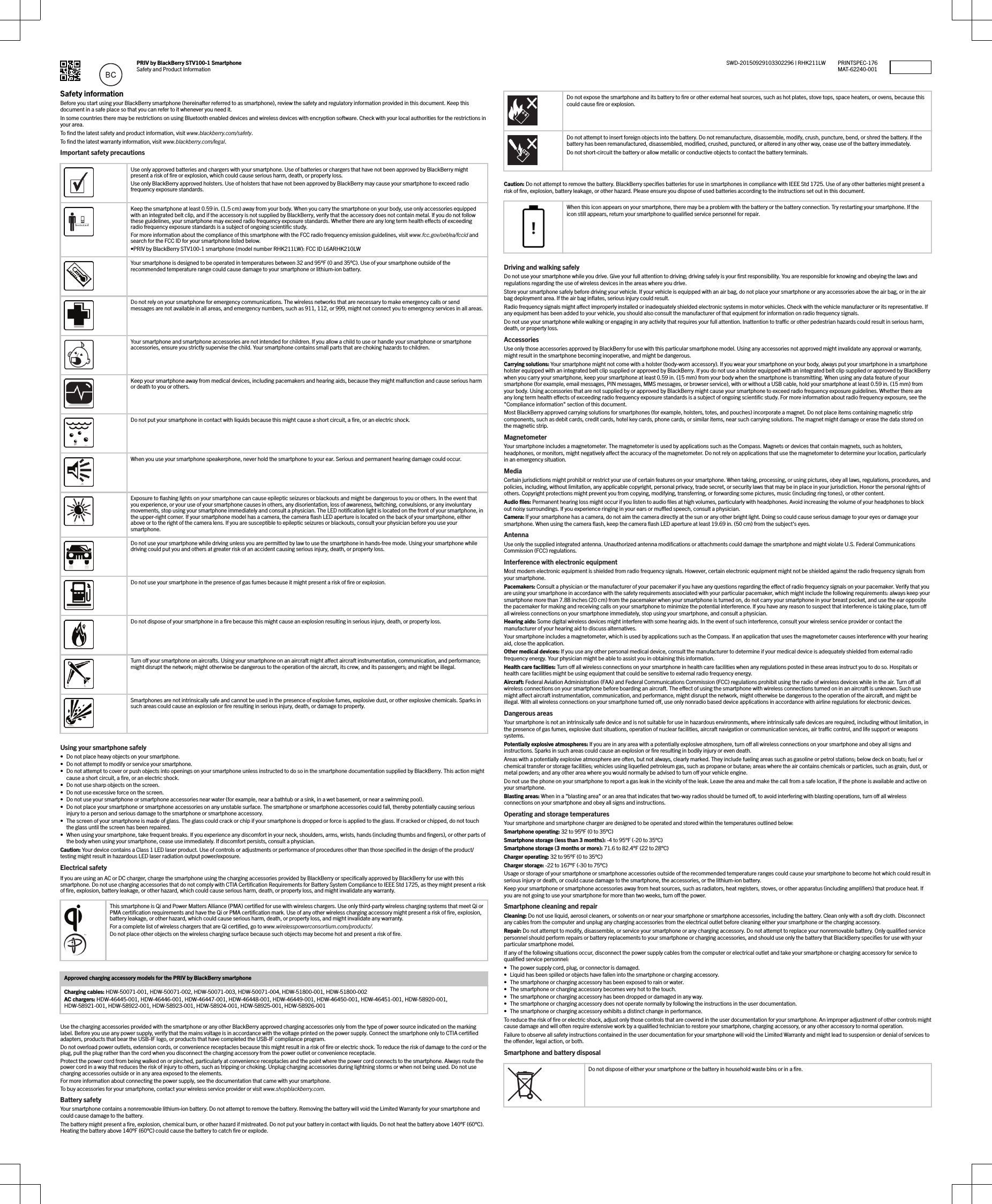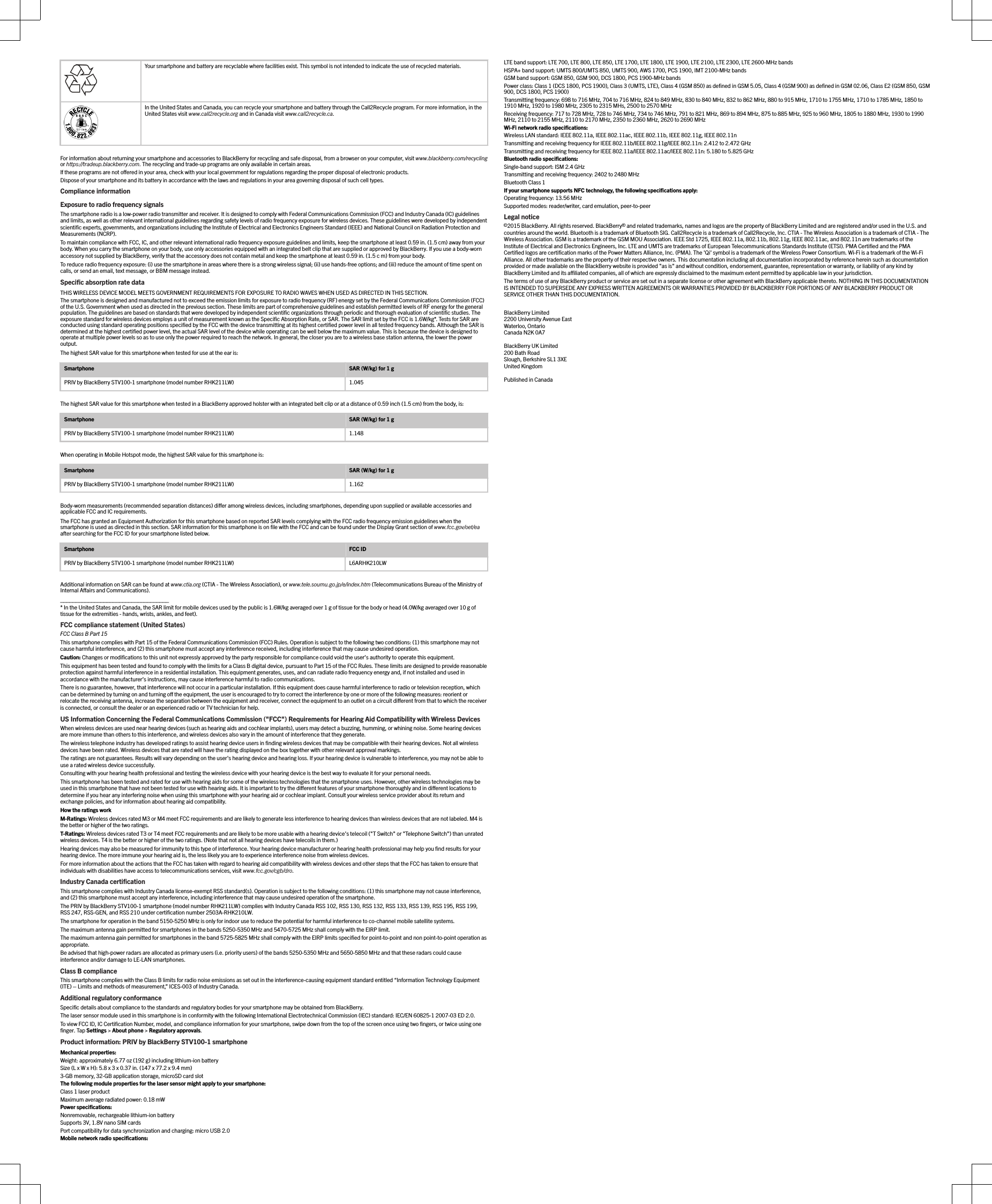BlackBerry RHK210LW Mobile phone with GSM/GPRS/EDGE 850/1900, WCDMA/HSPA FDD 2, 4, 5, LTE Bands 2, 4, 5, 12, 17, 30, 802.11 a/b/g/n/ac, Bluetooth, NFC, FM Radio and GPS. User Manual II
BlackBerry Limited Mobile phone with GSM/GPRS/EDGE 850/1900, WCDMA/HSPA FDD 2, 4, 5, LTE Bands 2, 4, 5, 12, 17, 30, 802.11 a/b/g/n/ac, Bluetooth, NFC, FM Radio and GPS. II
Contents
- 1. User Manual
- 2. User Manual II
User Manual II

